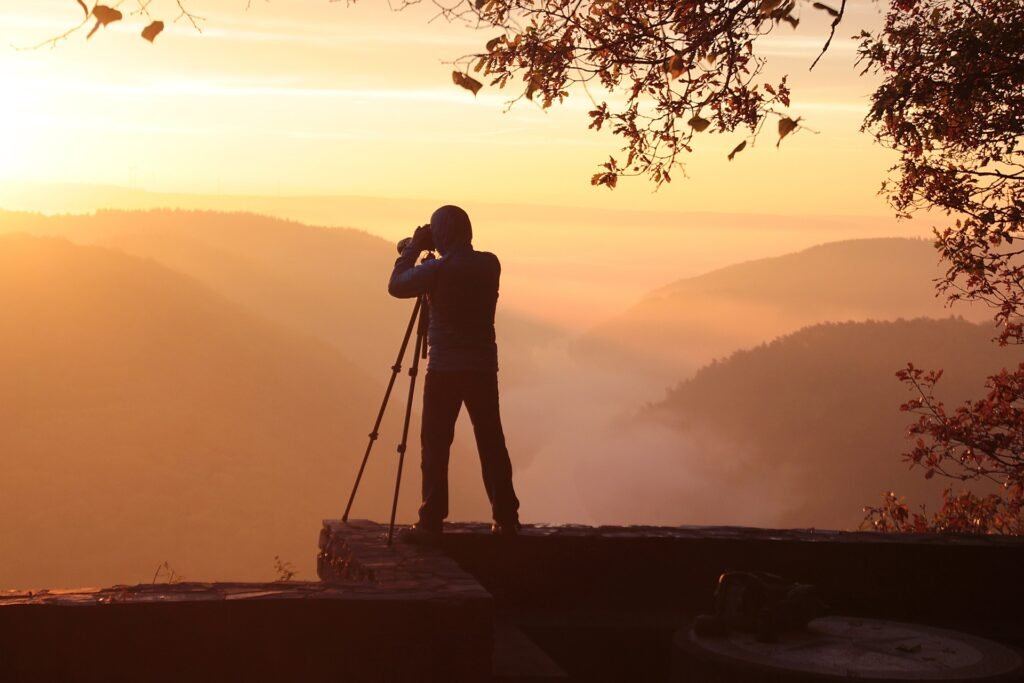
Why 'SAFE' is Essential in Photography
In photography, understanding the core technical elements is key to capturing exceptional images. The acronym “SAFE”—Shutter, Aperture, Focus, and Emulsion—offers a simple way to remember these building blocks. These concepts come into play in real-life photography scenarios, whether you’re shooting a wedding, a sports event, or working on a creative project.
Let’s break down how each element plays a vital role in everyday photography and how it can help you get the most out of your camera.
S for Shutter: Freezing Action in Real Life
The shutter is all about timing—knowing when to capture that perfect moment.
In the real world, shutter speed determines whether your images reflect motion or freeze it in time.
In Real-Life: As a sports photographer, you’re tasked with capturing a fast-paced soccer game. To freeze the exact moment when a player kicks the ball, you need a fast shutter speed, like 1/1000 or faster. This ensures that every detail—the player’s movement, the ball’s position, even the dust in the air—is crisp and clear.

In contrast, during a nighttime shoot of city streets, a slower shutter speed (such as 1/10 sec) can transform moving traffic into light trails, creating a dynamic image that tells the story of urban life.
Pro Tip: Practice adjusting your shutter speed based on the movement of your subject. Fast speeds capture fleeting moments, while slower speeds emphasize motion.
A for Aperture: Controlling Light and Depth in Real-Life Scenes
Aperture not only determines how much light enters your camera but also controls the depth of field, which decides how much of the scene is in sharp focus.
In Real-Life: At a family portrait session, you want the focus on the family while the background softly fades away. By choosing a wide aperture (such as f/2.8), you blur the background and draw attention to the smiling faces of your subjects. This creates an intimate, professional look.

Alternatively, if you’re shooting a scenic landscape while hiking, you’ll want a narrower aperture, like f/11 or f/16, so that everything—from the rocks in the foreground to the mountains in the distance—remains in sharp focus.
Pro Tip: Experiment with different apertures to control the mood of your photo. Use wide apertures for portraits or close-ups and narrow apertures for detailed landscapes or group photos.
F for Focus: Bringing Real-Life Subjects into Sharp Detail
Focus ensures that the key elements of your photo are sharp and clear. It’s particularly important in portrait, product, and macro photography, where even small details matter.
Real-Life Example: While photographing a couple during a sunset engagement shoot, you focus on their eyes. With shallow depth of field (f/2.8), the background blurs out, highlighting the emotion and connection between the couple, while the glowing sunset provides a soft, dreamy backdrop.

Now think of a wildlife shoot where you’re photographing a lion in the distance. Using your telephoto lens, it’s crucial to get the lion’s eyes in focus to capture the power and intensity of the scene.
Pro Tip: Autofocus is helpful in many situations, but practice manual focusing for challenging conditions—such as low light or fast-moving subjects—where the camera might struggle.
E for Emulsion: Bringing Film Sensibility to Real-Life Photography
Emulsion, a layer on traditional film, has a significant impact on the final image quality. While digital photography is the norm today, understanding the role of emulsion helps you appreciate texture and grain in photography.
In Real-Life: As a street photographer, you love the grainy, textured feel of old-school black-and-white film. While shooting in a busy market, you use a digital camera but apply a film emulation filter that mimics Kodak Tri-X 400, giving your images that gritty, documentary feel.

Even though most photographers use digital tools now, techniques like adding grain or using film-inspired presets bring back the timeless aesthetic of analog photography, helping you create images that feel authentic and textured.
Pro Tip: Try using film-inspired presets or filters in your digital work to replicate the feel of emulsion. This can give your images a nostalgic, artistic quality that stands out.
Real-Life 'SAFE' Photography: Practical Insights for Better Shots
Let’s apply the ‘SAFE’ approach to a common real-world scenario:
Imagine you’re a wedding photographer, tasked with capturing one of the most important days in someone’s life.
You’ll need to juggle all four elements of SAFE:
Shutter: During the first kiss, a fast shutter speed ensures the moment is frozen in perfect clarity.
Aperture: While photographing the bride, a wide aperture gives you a soft, dreamy background, putting all the focus on her.
Focus: You’ll manually focus on important details, such as the couple’s rings or the bride’s bouquet, ensuring those small but meaningful elements shine.
Emulsion: Post-wedding, you apply a film-like preset to some of the photos, adding a vintage feel that matches the wedding’s rustic theme.
In every shoot, these four elements work together to give you control over your final image, helping you tell the story exactly the way you envision it.
Conclusion: How 'SAFE' Can Transform Your Photography
Shutter, Aperture, Focus, and Emulsion are the cornerstones of photography, each offering a unique way to control your image. Whether you’re a professional photographer or an enthusiast, understanding and mastering these elements will elevate your work and give you the confidence to shoot in any scenario.
At Fotothrive.com, we believe that practicing the ‘SAFE’ approach gives you the creative control and technical foundation needed to thrive in your photography journey.